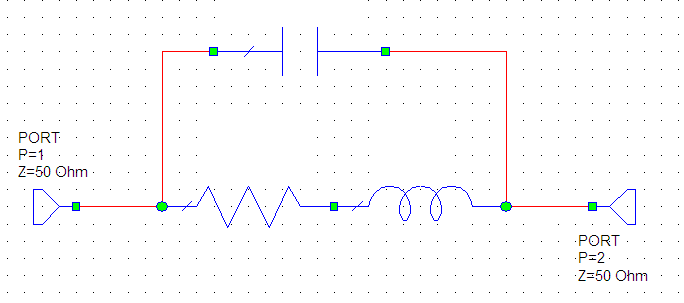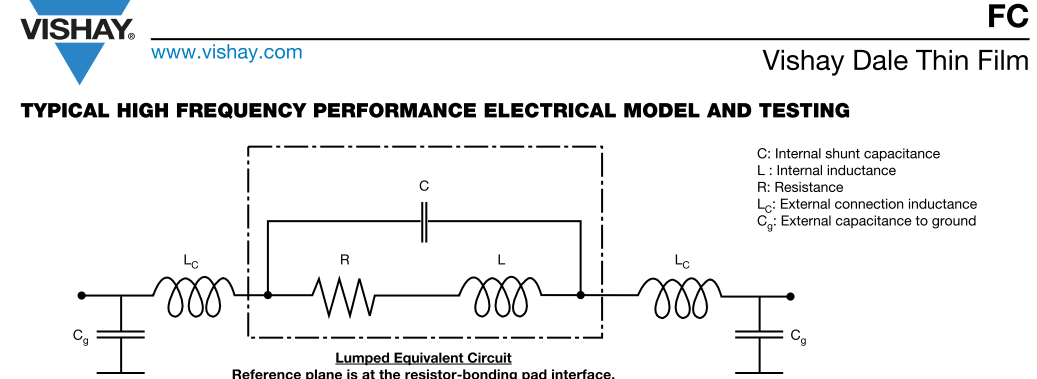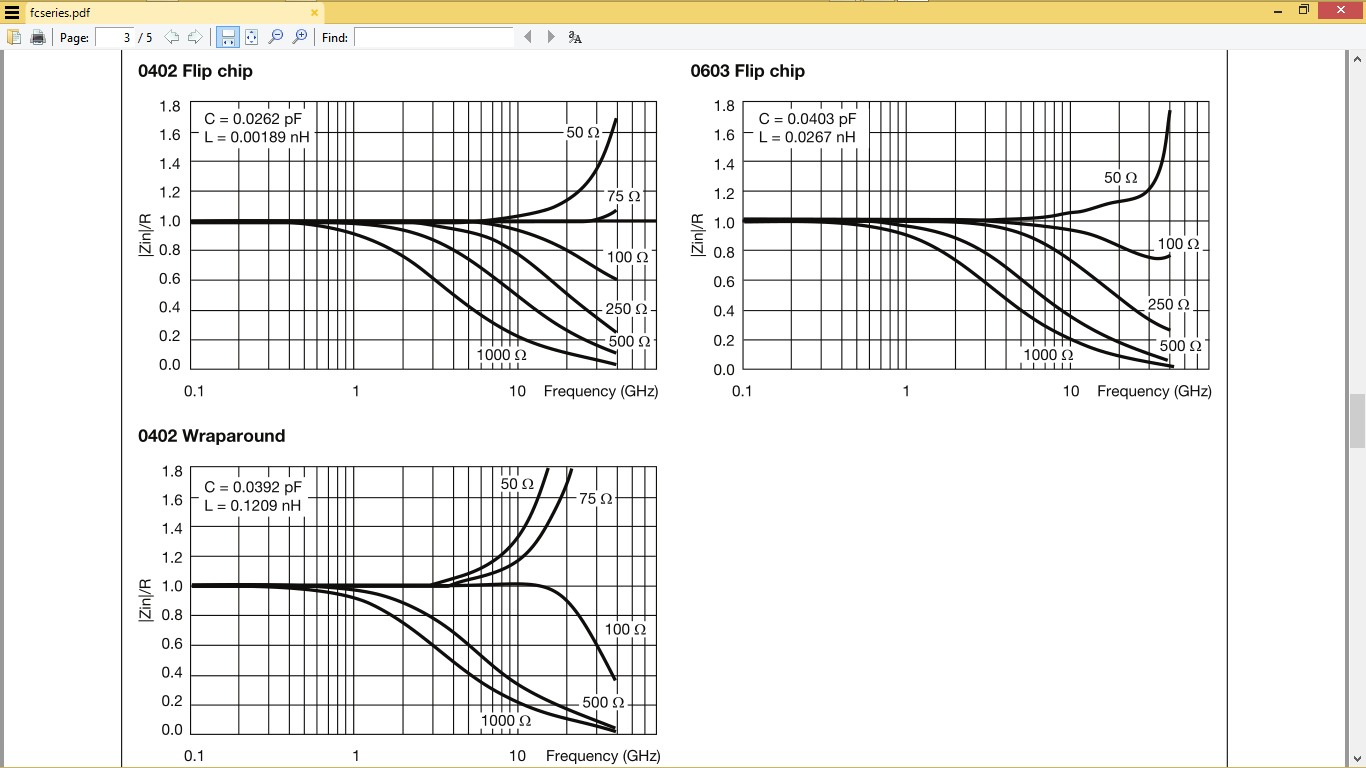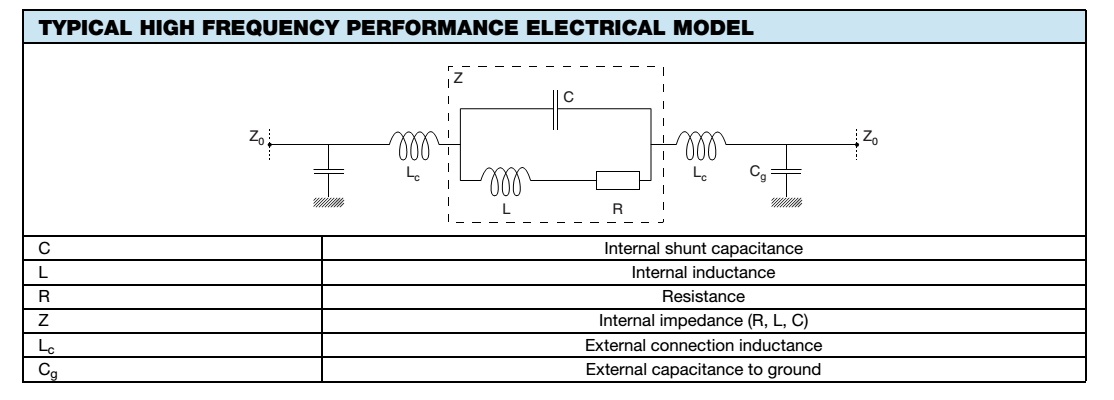S-parameters model for surface mount resistor in microwave
Thanks.
You can find S-parameter files on the manufacturer download pages.
You can also purchase the Modelithics CLR library.
Or you can measure if you understand the de-embedding process.
Or you can EM simulate as a resistive sheet (assuming that there are no meanders or cuts from laser trimming).
Ask supplier for s- parameters then add same for traces.
Use lumped circuit analysis
Choose values for trace Ls, Cp to each end point then lookup parameters for vendor model and size for L,C,R.
It will be pretty bad at 12GHz for 805 and many 603, unless specifically designed for RF. (flip chip or wraparound.) Orientation also affects values and some designs use different methods to improve performance near SRF.
Consider Vishay Dale Thin Film
Model :FC in 603, 402 ..even 201 and compare.
http://www.vishay.com/docs/60093/fcseries.pdf
thanks for replying, volker
but the number of s-parameter files provided are very few
and they are modeled for the regular resistor values such as 50 ohms, 100 ohms and 1 kohms but specific value such as 120 not available.
Modelithics CLR library as I noticed it is for the regular values .
I'm still newby this topic, so excuse me how to EM simulate it?
To determine S parameters of a chip resistor, it must be placed in a micro strip with known parameters (substrate height, trace width, Er), reference planes have to defined. And it can be shunt or series connected.
thanks, sunnyskyguy.
Vishay provides S-parameter models for FC series and CH series but both for regular values how can use these files to fit for a specific resistor value.
Choosing Ls and Cp values based on what?
It depends on the library, other vendors have more complete libraries. What I do if I need a value that is not in the library: pick the nearest value from the library, and then add the difference in resistance as an ideal resistor connected in series.
I don't understand what you mean? Modelithics has scalable models, so they are very useful and complete. The only disadvantage is price, but the accurate models are worth it, in my opinion.
If you are not familiar with EM, it doesn't make sense to try that. Getting accurate data from EM needs some time to learn and practice. So in your case use a library.
Now that you have no ready-made s-parameter model ,
just create one

Ls, Cp : Refer to your data sheet
R : just its value
Or as volker@muehlhaus said,
by means of measurement if you understand the de-embedding process.......
The problem with your model is that all shunt capacitance is missing, so this is not accurate enough. The model topology in the Vishay data sheet is more accurate ... but unfortunately they have not provided any values.

Hmm…….but……..my model……is just based on Vishay.
\( ̄口 ̄)/
Cg is external capacitance to GND,
Thus, would you please explain more ?
all shunt capacitance is missing ?
I am confused………..
TKS~!
With the series I suggest LC values are given for each case size. (smaller is better) ;)
R values are shown in graphs. This does not include external parasitic elements.

for size, the smaller the better
Is the aim to posses higher SRF ?
TKS~!
I was referring to criterion456. His model is too simple to be useful. The Vishay model is ok.
You are right, I missed the L,C specs in the plots.
For the shunt elements, I would assume parallel plate capacitor math, with Al2O3 dielectric for the resistor body and then PCB substrate below with the actual values for permittivity and thickness.
I contacted Vishay asking about S-parameter model for 120 ohms and 180 ohms in CH series,
they suggested using the electrical model provided in datasheet

and they send me values for capacitors and inductances to use with electrical model
- Mounting GPS ceramic patch antenna (Passive) on double sided PCB
- what is the maximum amount of solder needed between SMA connector and microstrip?
- How to mount RF substrate into a Al housing for making an RF module
- Antenna Mounting within case
- Shunt Mounted Diode Rectenna ADS
- IoT, transfer "large" amount of data
